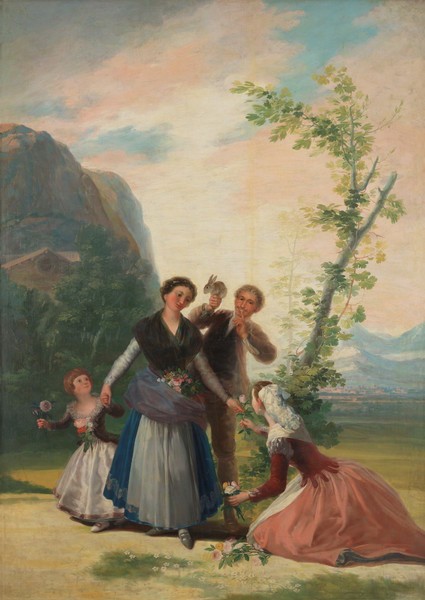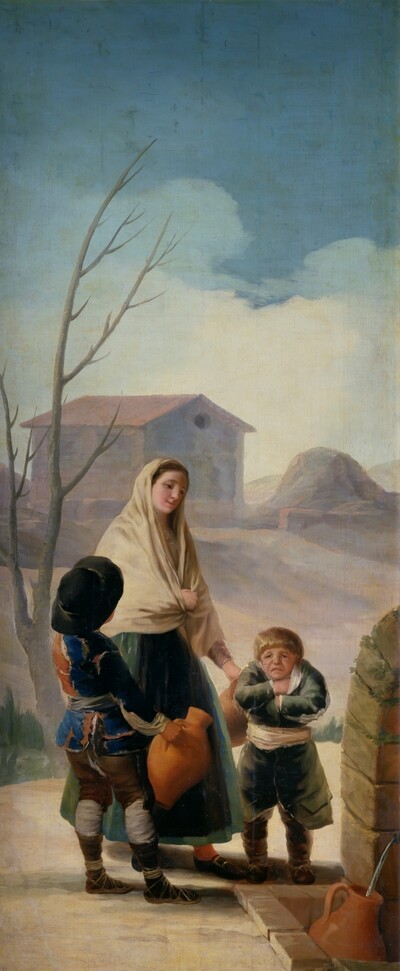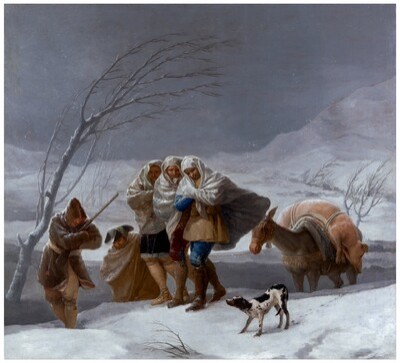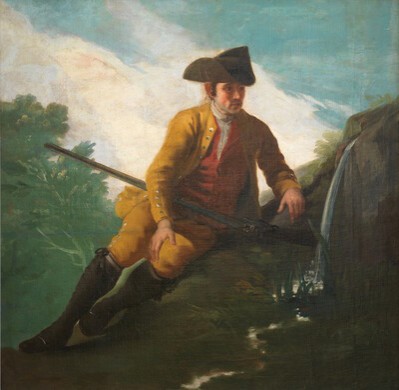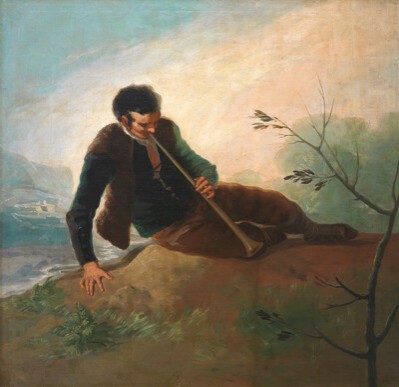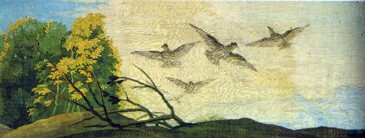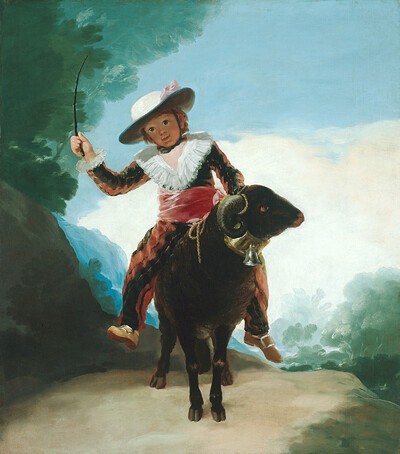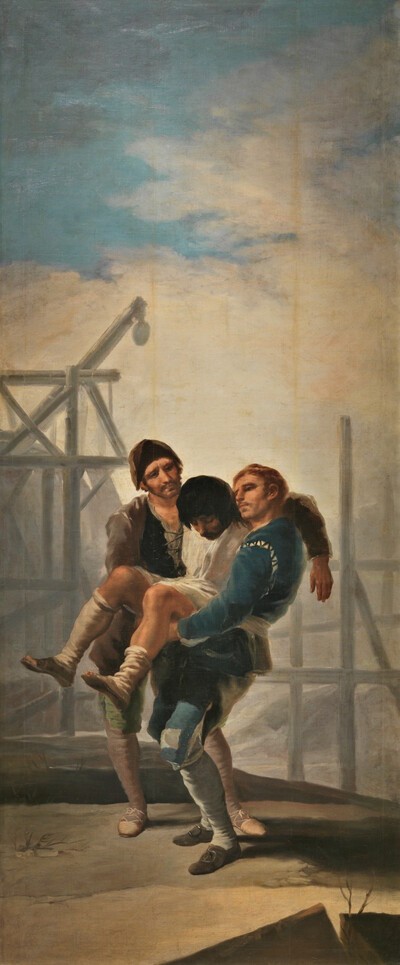- Cronología
- 1786 - 1787
- Ubicación
- The Prado National Museum. Madrid, Madrid, Spain
- Dimensiones
- 277 x 192 cm
- Técnica y soporte
- Oil on canvas
- Reconocimiento de la autoría de Goya
- Documented work
- Titular
- El Prado National Museum
- Ficha: realización/revisión
- 08 Dec 2009 / 14 Jun 2023
- Inventario
- (P00793)
- Otros títulos:
-
Spring (La primavera)
This piece forms part of the series of cartoons that Goya made for the decoration of the king's conversation room in the palace of El Pardo. They were painted between May 1786, shortly after Goya was named royal painter, and the end of 1787. Owing to the death of Charles III in 1788, this group of works never occupied its originally planned destination but was instead spread out between various rooms in the palace of San Lorenzo de El Escorial. With this series Goya once again took up the work on the tapestry cartoons, six years after the last delivery, which was made before the closing and reopening of the tapestry factory.
Since the artist was now receiving an annual salary, thanks to his new status as chamber painter, we do not have the detailed invoices with descriptions of the cartoons that we had for the previous series. We do however have the accounts for his material expenses. In the second half of November 1786, the account of the carpenter who made the stretchers for Goya's cartoons includes six pieces: those of the four seasons and those of The Injured Mason and Poor Children at the Well.
This cartoon was included in Vicente López's inventory of 1834, undertaken for Ferdinand VII's will. Around 1856 or 1857, the cartoon was moved from the Royal Tapestry Factory of Santa Bárbara to the Palacio de Oriente in Madrid, and remained in the tapestry basements until orders given on 18 January and 9 February 1870 had it taken to the Prado Museum.
The tapestry of The Flower Girls would have hung on the south wall of the room, flanking a door with its pair, The Grape Harvest (or Autumn).
We see two women carrying flowers; one of them is seated on the ground with her back to us, whilst the other takes a young girl by the hand. Behind them is a man holding up a hare, gesturing for silence with his finger over his mouth so as not to spoil the practical joke he is about to play on the woman who is standing. The figures form a clear pyramid-shaped composition. Their faces are carefully rendered, and Goya went to great pains to reflect the mood of the characters, hence the man's wide grin and the daydreaming gaze of the flower girl.
Its delicateness, the countryside theme that it represents, the diversity of colours and the elements taken from nature make The Flower Girls the most traditional and rococo of those works made for the palace of El Pardo.
This cartoon has also been known by the title of Spring, and forms part of the series of cartoons representing the four seasons. Right in the centre of the composition, where the two diagonal lines cross, we find a flower, the symbol of spring. Nordström also tells us that the rabbit is a symbol of fertility, and therefore of spring, too.
Tomlinson continues with this springtime interpretation by associating the flower with the goddess Venus and the girl with youth and the rebirth of spring.
-
Goya. 250 AniversarioMuseo Nacional del PradoMadrid1996consultant editor Juan J. Luna. From March 29th to June 2nd 1996cat. 35
-
Goya y el infante don Luis: el exilio y el reino.Palacio Real, MadridMadrid2012Arte y ciencia en la época de la ilustración española. Responsable científico Francisco Calvo Serraller. Del octubre de 2012 a enero de 2013.cat. 48
-
Goya en Madrid. Cartones para tapices 1775-1794Museo Nacional del PradoMadrid2014p. 253
-
L'œuvre peint de Goya. 4 volsParís1928-1950vol. I, p. 90, cat. 31
-
Tapices de GoyaMadridPatrimonio Nacional1946pp. 141, 143, 246, cat. 40 y láms. 141-1
-
Goya, Saturno y melancolía. Consideraciones sobre el arte de GoyaStockholmAlquimis & Wiksell1962pp. 42-49 y p. 43 (il.)
-
Vie et ouvre de Francisco de GoyaParísOffice du livre1970p. 97, cat. 271
-
BarcelonaPolígrafa1970vol. I, pp. 269-270, cat. 229
-
L’opera pittorica completa di GoyaMilanRizzoli1974p. 102, cat. 209
-
Francisco de Goya, 4 vols.ZaragozaCaja de Ahorros de Zaragoza, Aragón y Rioja1980-1982vol. II, p. 46
-
Imagen de GoyaMadridLumen1983pp. 77-78
-
Francisco de Goya, cartones y tapicescol. col. "Espasa Arte"Espasa Calpe1987pp. 138, 284, cat. 44C y p. 139 (il.)
-
Francisco de Goya. Los cartones para tapices y los comienzos de su carrera en la corte de Madridcol. col. "Ensayos de Arte Cátedra"MadridCátedra1987205-211 y p. 207 (il.)
-
Goya. 250 AniversarioMadridMuseo del Prado1996p. 314, cat. 35 y pp. 110, 111 (ils.)
-
Salas del Palacio Real de El Pardo para las que se tejieron tapices sobre cartones de Francisco de Goya: identificación de las habitaciones y ajuste de las obras de Goya en los alzados de las paredesin HERRERO CARRETERO, Concha (curator, Tapices y cartones de Goya (catalogue of the exhibition organizated at the Palacio Real de Madrid, from may to june 1996)MadridPatrimonio Nacional, Goya 96, Lunwerg1996p. 164 (il.)
-
Goya en Madrid. Cartones para tapices 1775-1794MadridMuseo Nacional del Prado2014p. 253
